WWII Operation Cobra U.S. Army Combat Marked Breakout of Normandy France Map
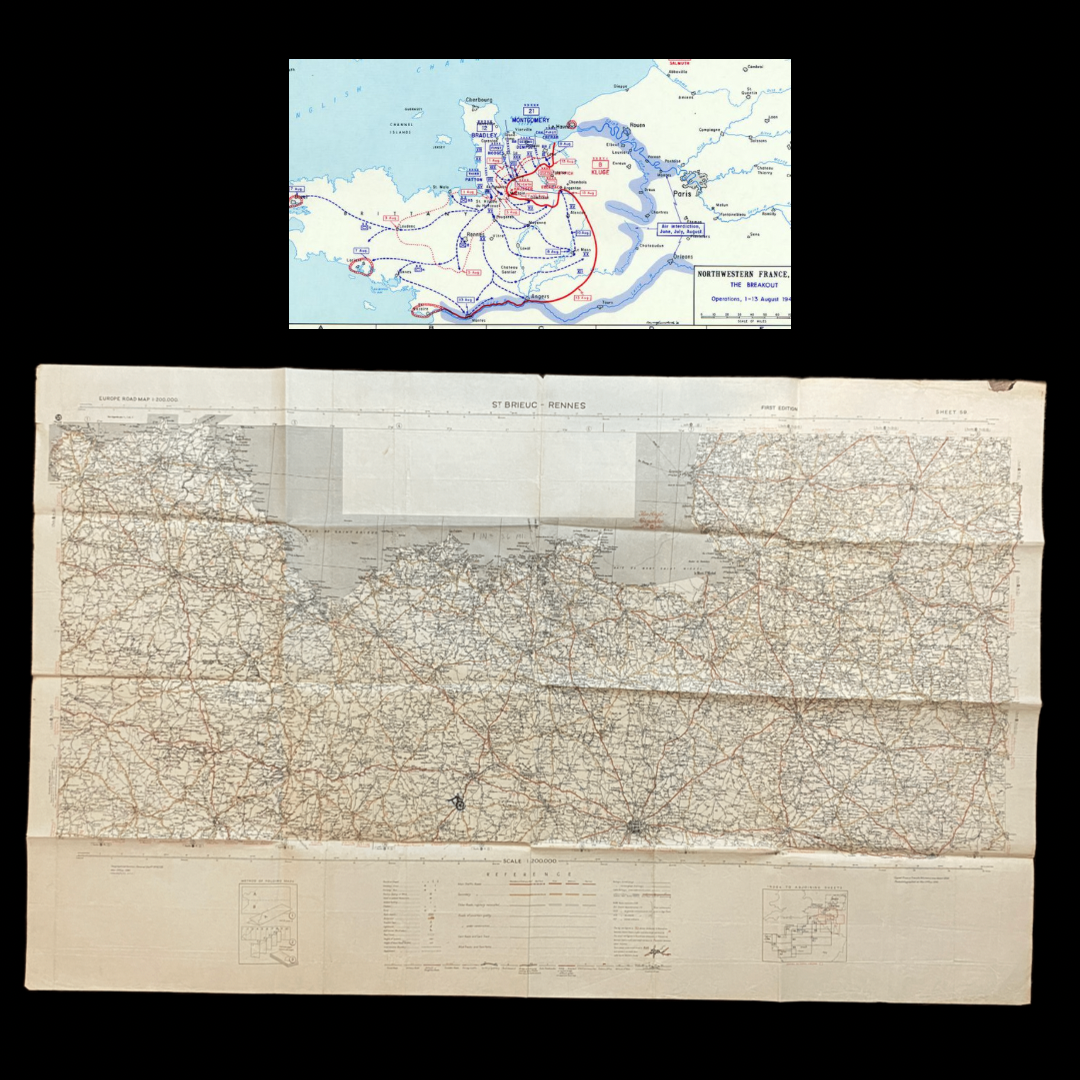

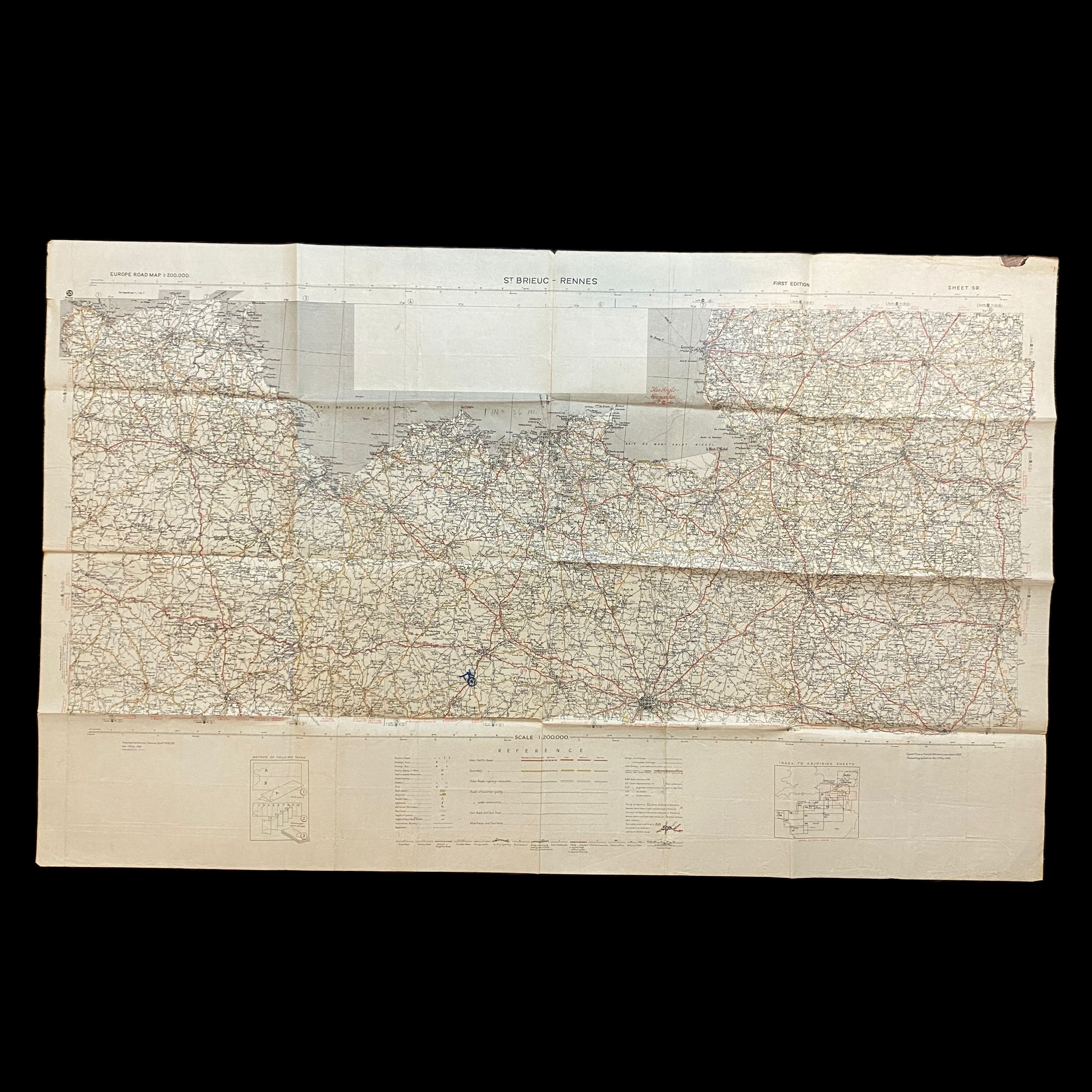
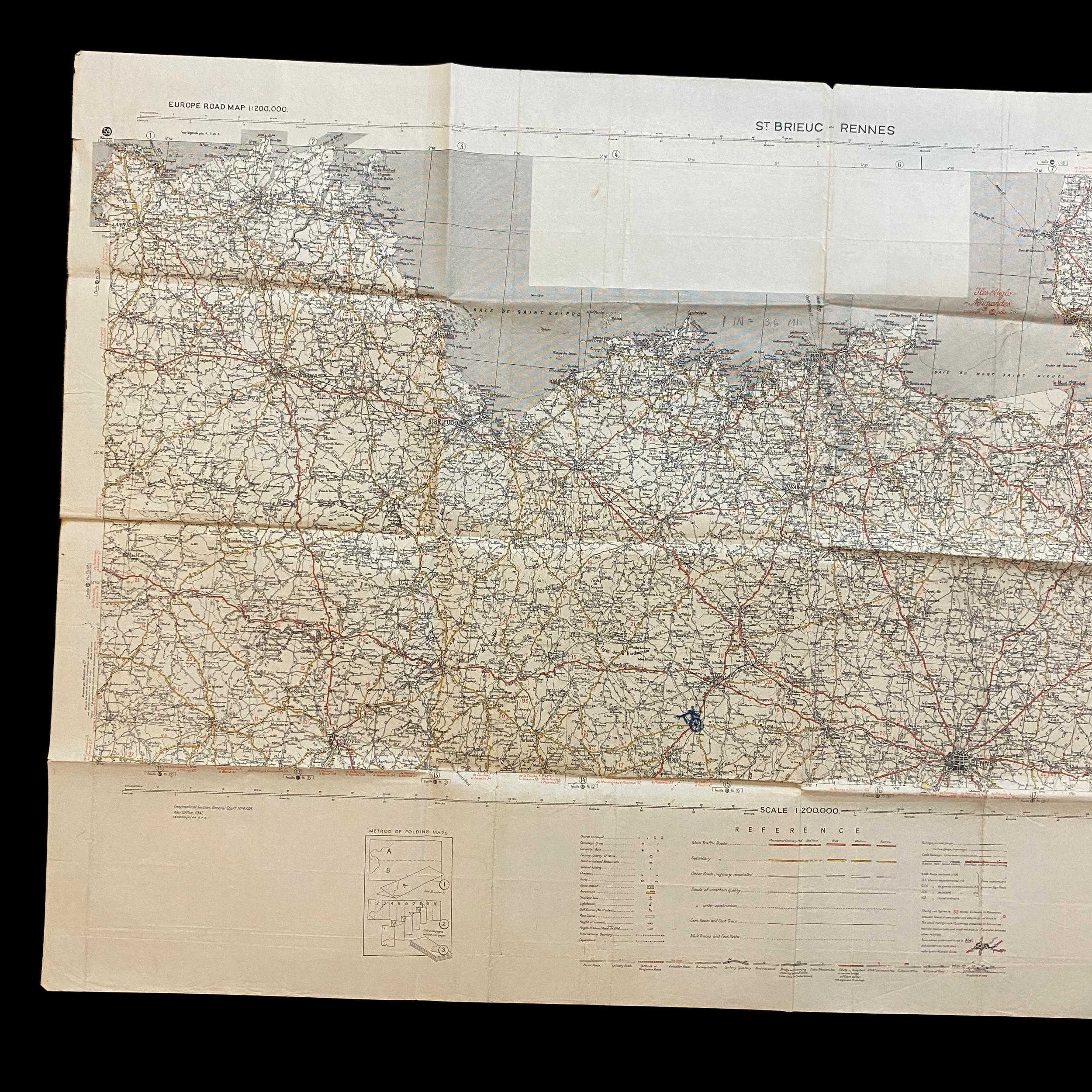

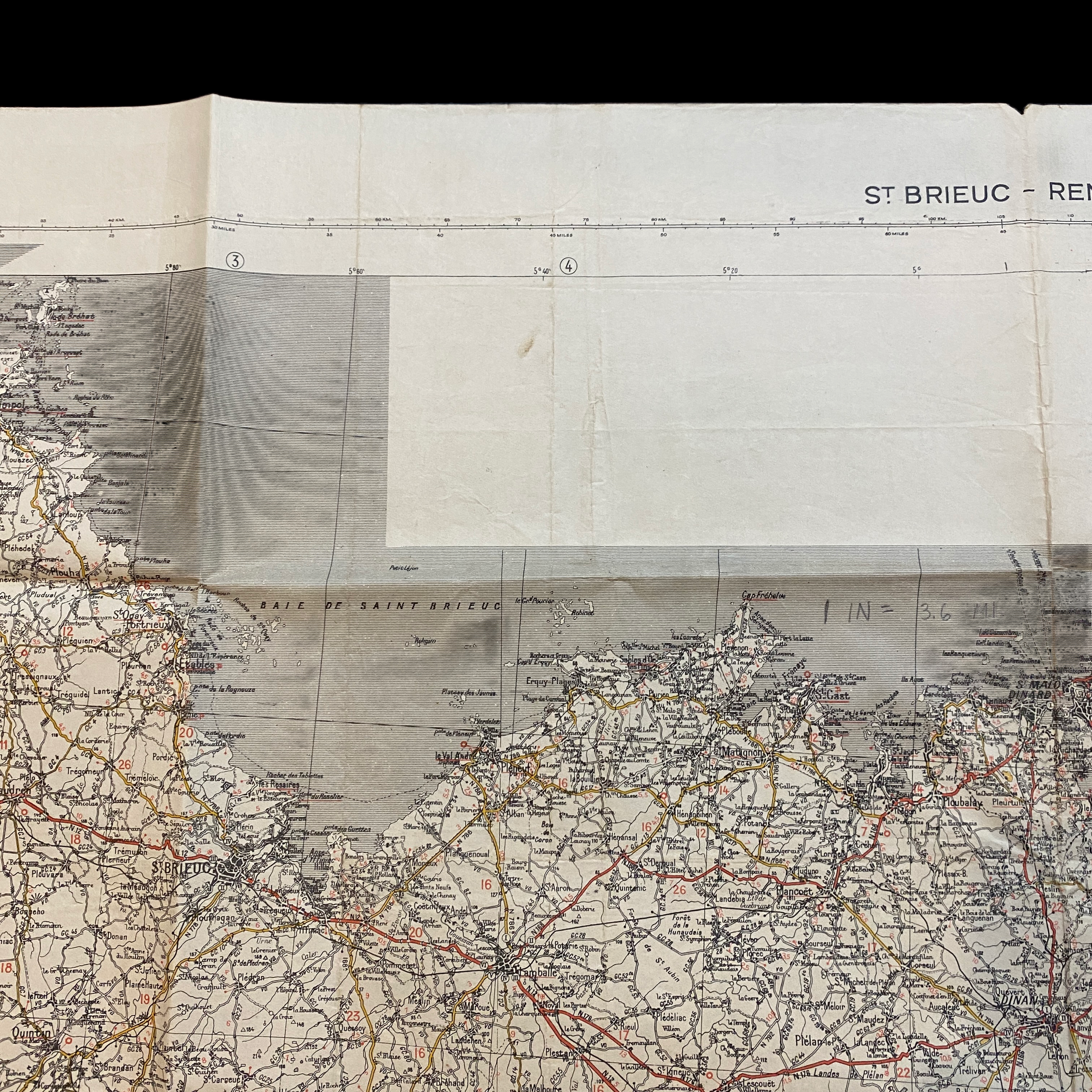
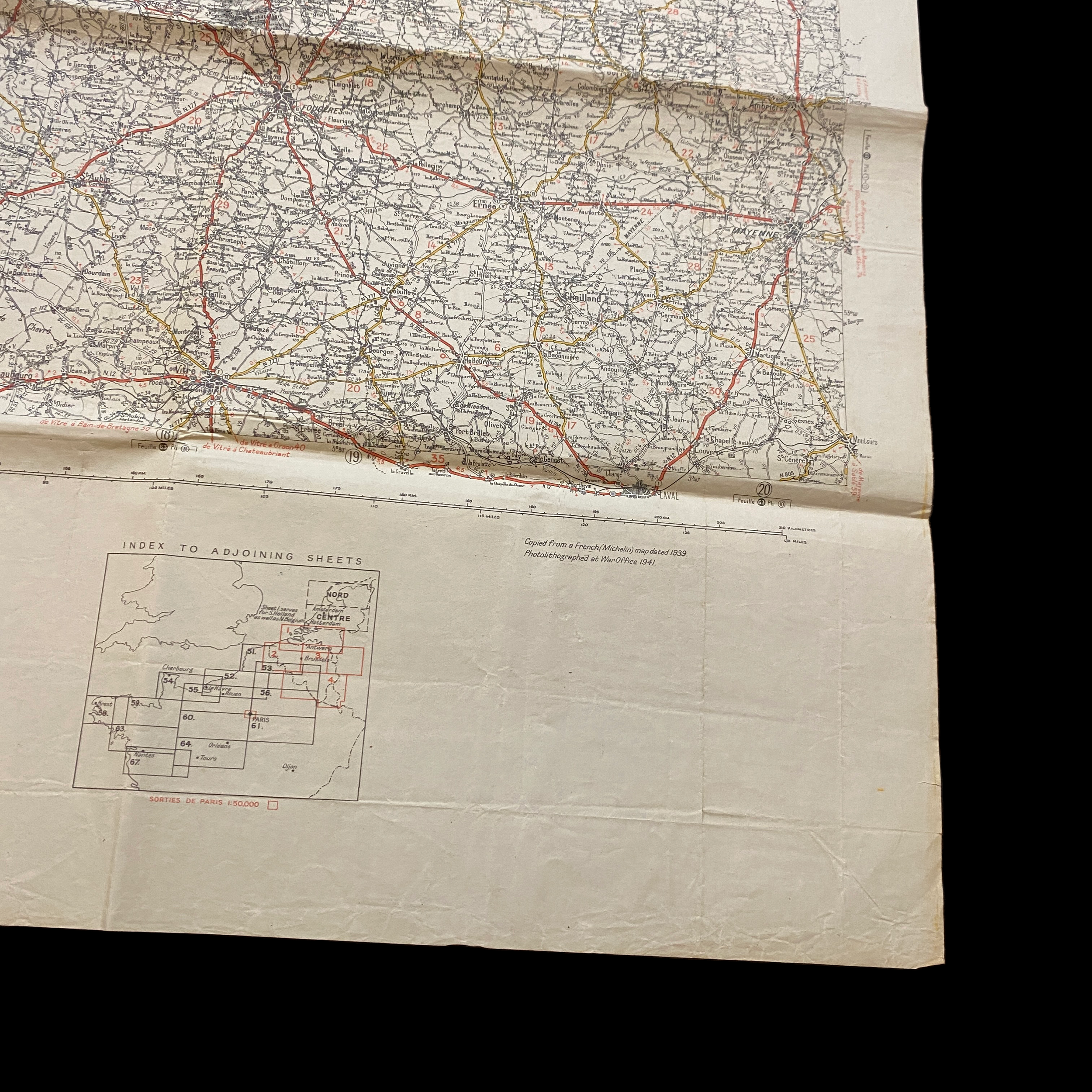
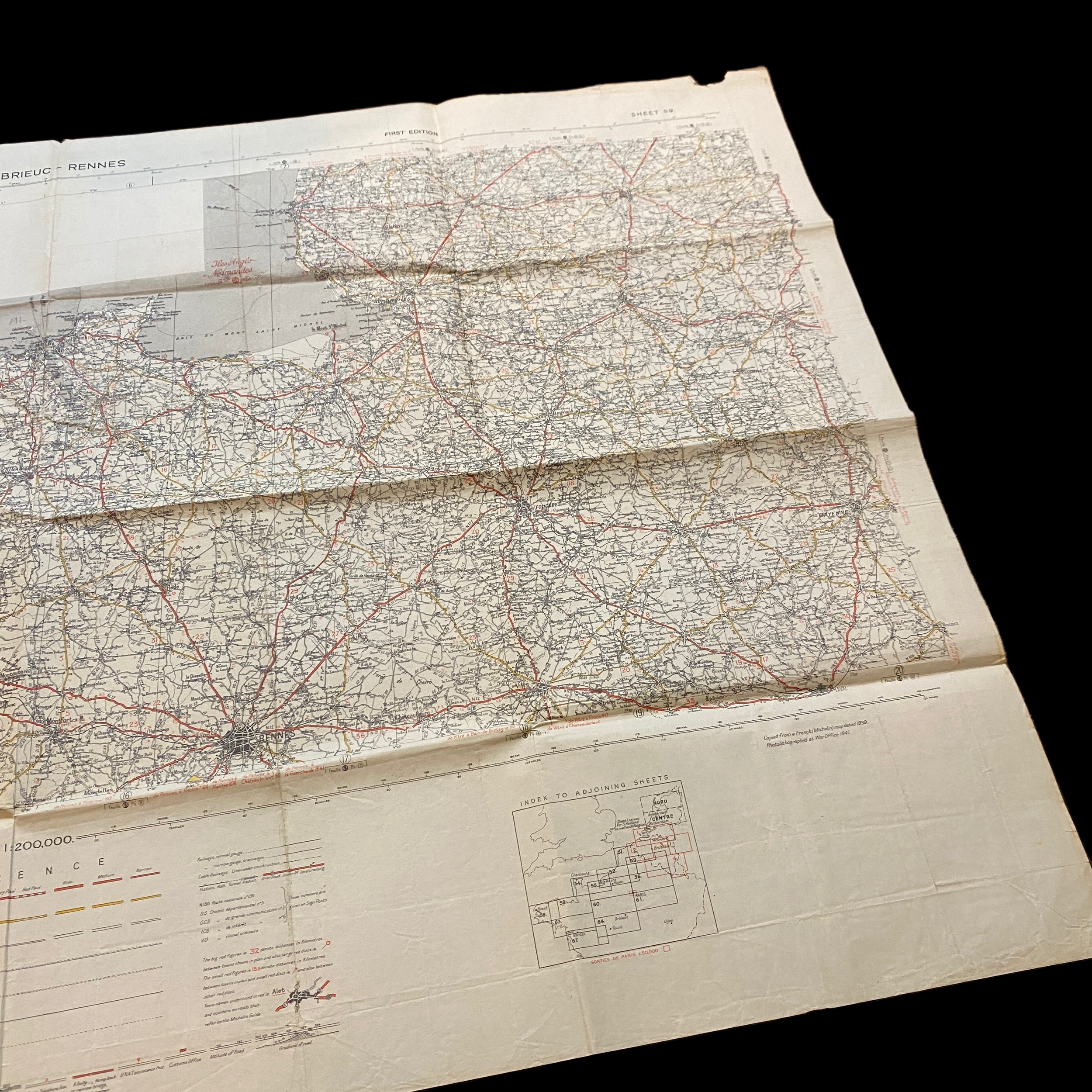




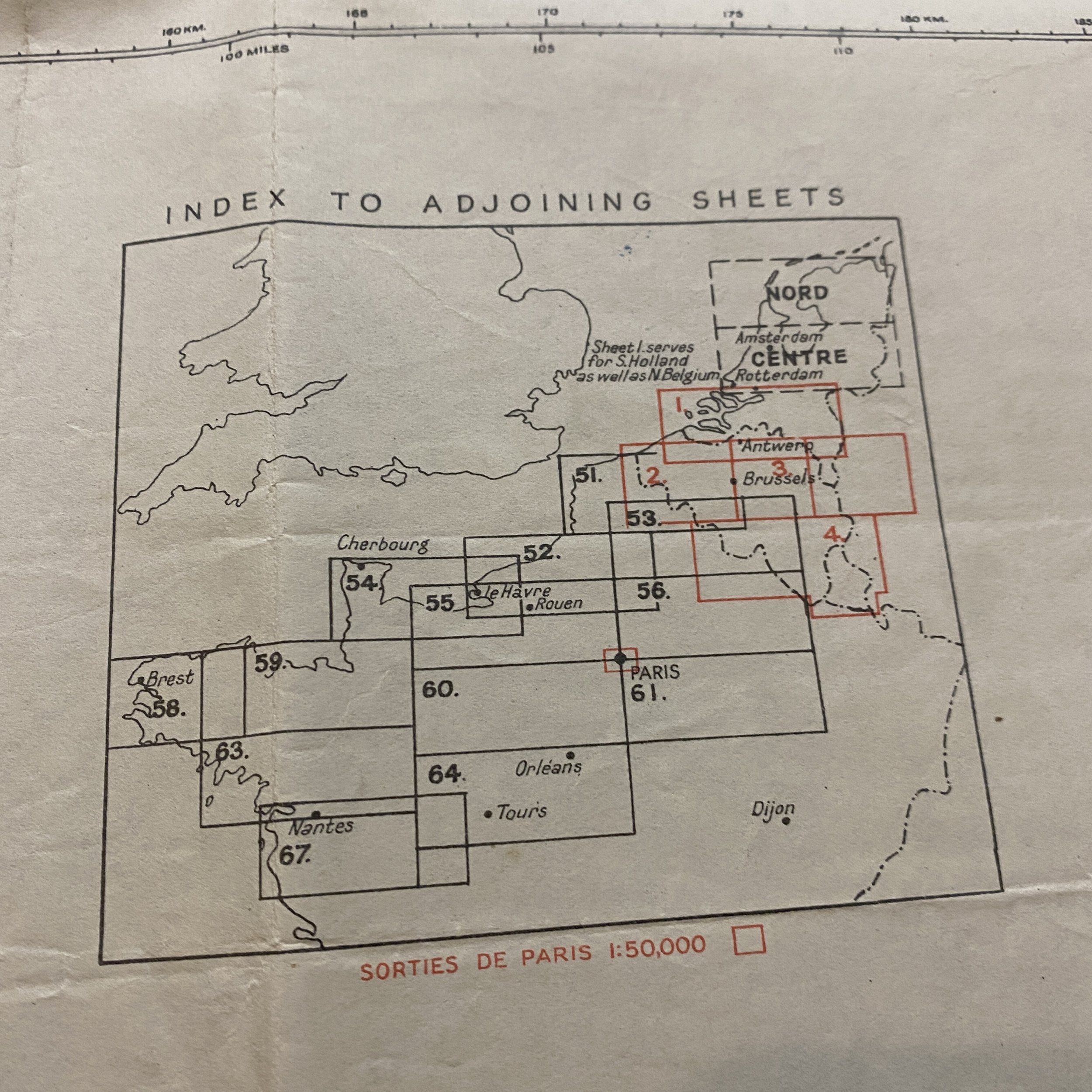





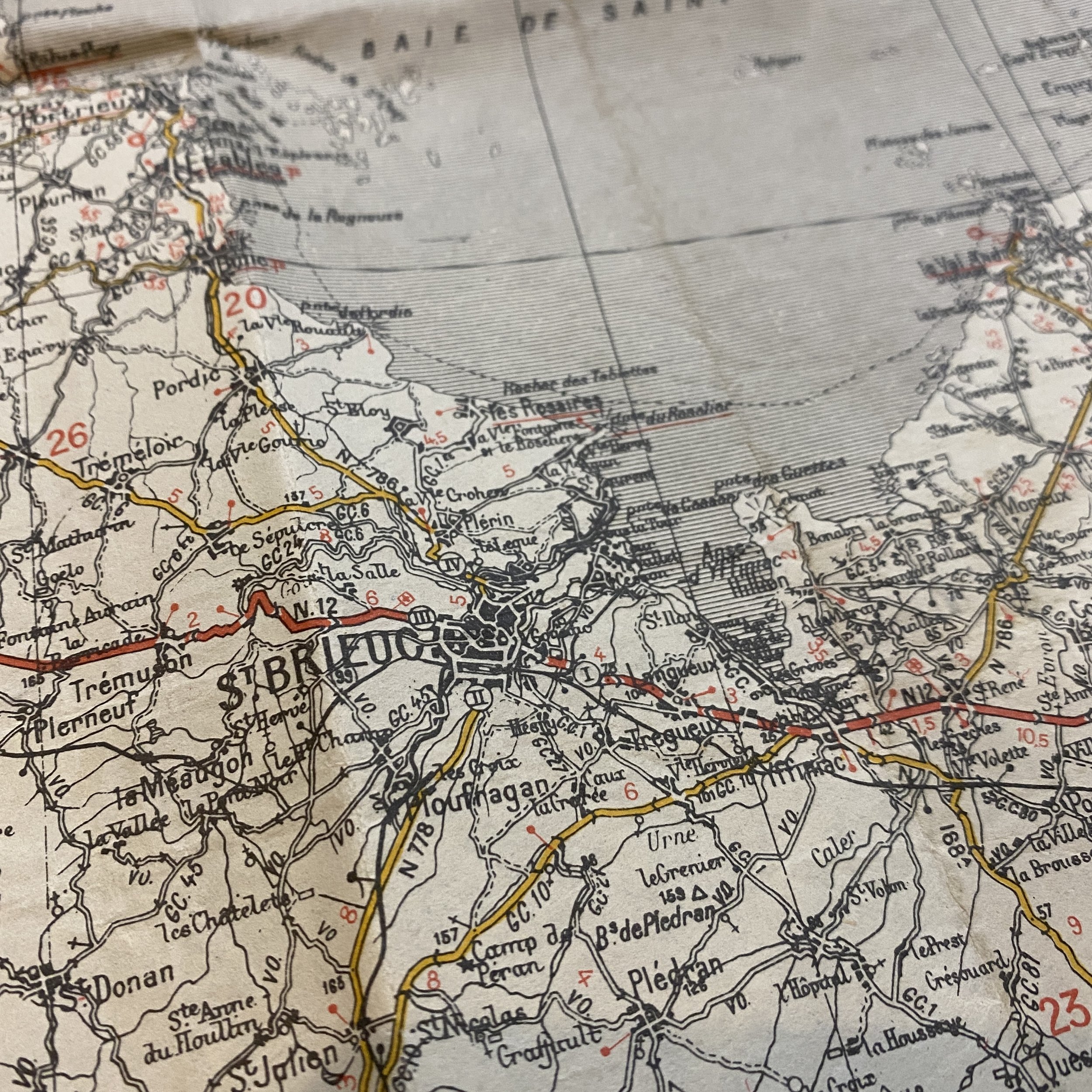
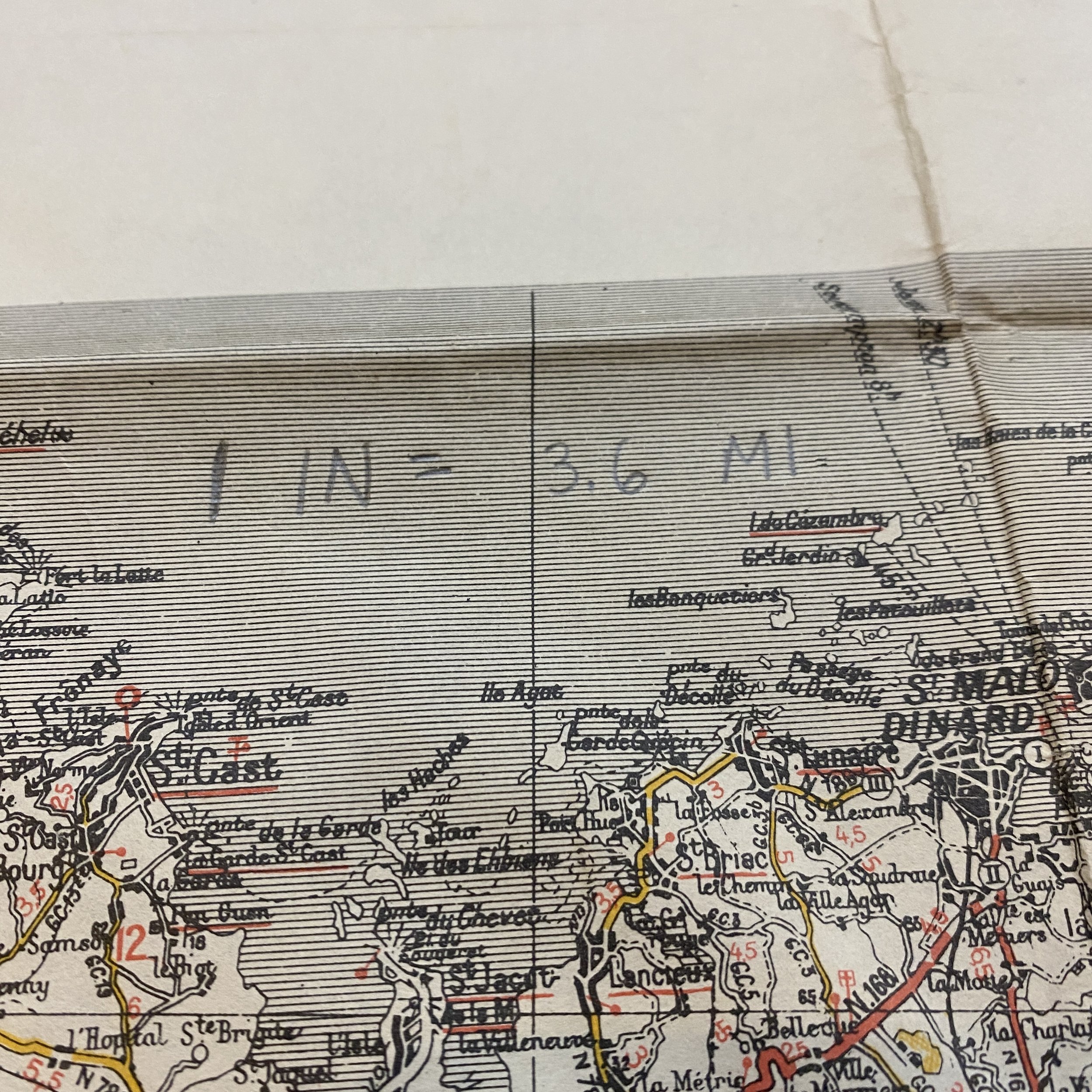


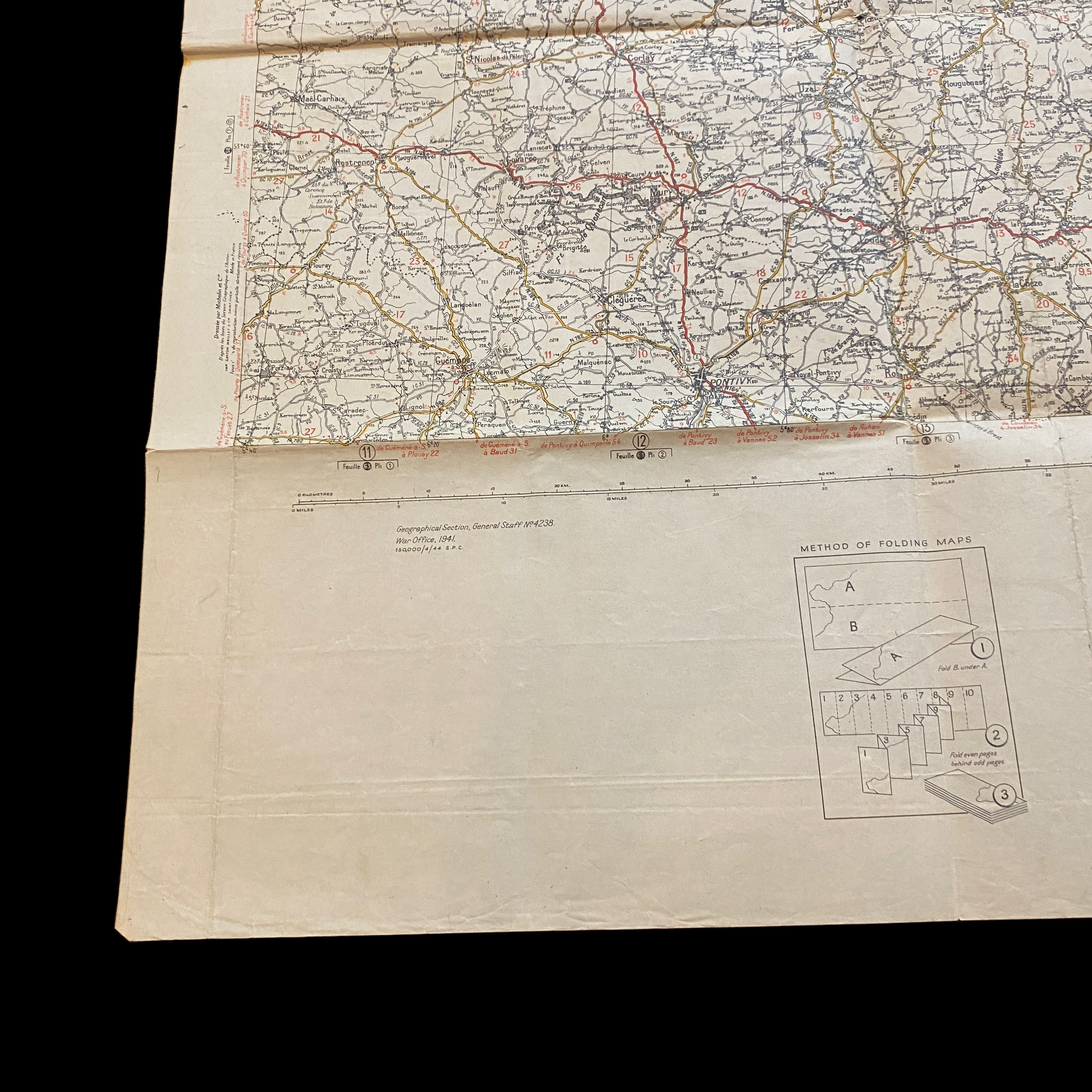


WWII Operation Cobra U.S. Army Combat Marked Breakout of Normandy France Map
Comes with hand-signed C.O.A.
This incredible WWII U.S. Army operations map was used following the June 6th, 1944 Allied D-Day landings and the infamous breakout of Normandy during Operation Cobra. What makes this ETO combat map even more special are the rare hand-marked movement annotations throughout this region of France during the COBRA operations.
Operation COBRA, the American breakout from Normandy at the end of July 1944, completely changed the dynamics of the fighting in western Europe. In its aftermath, Allied forces would partially encircle and almost completely destroy German forces in Normandy; and American tanks under General George S. Patton would drive across France to the German border, leading to the liberation of Paris. With all of these dramatic events taking place, few noticed that one of the war’s bloodiest and most important operations was taking place far to the west, at the French port city of Brest—few, that is, except for the men who fought there in the sweltering summer days of August-September 1944. Those who survived would never forget.
The success of Operation COBRA was followed in short order by the penetration of American mobile forces into Brittany. Their primary objective was to capture the peninsula’s several important harbor facilities. Although General “Lightning” Joe Collins’s VII Corps had captured Cherbourg a month earlier, the Germans had so thoroughly demolished the port that months would pass before it was again operational. Securing another port, hopefully intact, would do a great deal to reduce the supply bottleneck still running through the Normandy beaches, and hopefully fuel Patton’s tanks. The Germans knew this as well, however, and had done a great deal to fortify and garrison the most important harbors in Brittany—especially Brest.
Paratroop General Hermann-Bernhard Ramcke, a wily veteran who had served under General Erwin Rommel in North Africa, commanded the 40,000-man garrison in Brest, which Adolf Hitler had declared a fortress to be defended to the last bullet. Two infantry divisions and one parachute division with associated elements, including ample artillery and machine guns, defended a formidable network of bunkers, pillboxes, emplacements, and trenches, all placed for mutual support. These were arrayed in exterior and interior lines, with the intention of eventually drawing any attackers into the city for house-to-house fighting and heavy casualties. To ensure that the garrison would be able to hold on to the city almost indefinitely, without having to feed civilians, the Germans had forcibly evacuated the population.When American forces entered Brittany, Patton ordered his 6th Armored Division to rush ahead and capture Brest, hoping that a lightning strike would find the Germans unprepared. This bid failed, as the Americans reached the outer defensive lines on August 7 and found them far too formidable to penetrate. The next two weeks passed slowly as American forces slowly encircled the city and the Germans further improved their defenses. Finally, General Omar Bradley dispatched General Troy Middleton’s VIII Corps, with the 2nd, 8th, and 29th infantry divisions and Ranger detachments to storm the city. After some preliminary attacks, the full assault, backed by artillery and strikes by aircraft using bombs, rockets, and napalm, began on August 26.
American infantrymen found the German defenses incredibly difficult to crack, and the fighting was brutal. Far from lying supine in their defenses, the Germans struck back ferociously wherever possible. Sergeant John McVeigh, a native of Philadelphia and draftee with the 2nd Division’s 23rd Infantry Regiment, fought for three days before his platoon took up positions behind a hedge just after dusk on August 29. Before the Americans had time to dig in, German infantry suddenly counterattacked and came close to overrunning the position. Rallying his men, McVeigh stood up in view of the enemy and directed accurate fire against them. Then, drawing a knife, he charged the attacking Germans, killing one of them before the enemy shot him down. McVeigh’s action gave his men time to reorganize and hold off the enemy attack, and earned him a posthumous Medal of Honor.Heavy casualties soon forced Middleton to shift from all-out assaults on the German positions to small but intense bite-and-hold operations, in which infantry took out one strongpoint at a time and then held on grimly against German counterattacks. In fighting reminiscent of island combat against the Japanese in the Pacific, American infantry used flamethrowers, satchel charges, and concentrated small-arms fire to move slowly from point to point. Unfortunately, rain and fog limited airstrikes, and Middleton’s artillery began running out of ammunition. Soon days turned into weeks as American forces crept closer to the beleaguered city.In early September, finally, after General Dwight D. Eisenhower authorized his forces to “utilize maximum number of aircraft which can be effectively employed in support of this operation,” the hard-fighting infantry captured a number of important strongpoints in the German perimeter, which began crumbling inward. On September 8, after carefully marshaling his troops and supplies, Middleton launched his divisions in a coordinated assault that ended with the American infantry surging into the streets of Brest.
But the fighting was far from over. Moving toward the city center, GIs found it impossible to move in the open because of German anti-tank guns and machine guns sited to sweep the streets. This forced the infantry to use satchel charges to blast holes in walls to move from house to house. On September 10, troops of the 8th Division encountered a new obstacle when they reached the old city wall, 25-35 feet high with a dry moat 15-25 feet deep. Heavy artillery was brought up to blast holes in the wall at point-blank range, but they were unable to blow gaps large enough for the infantry to break through. After brutal casualties, the 8th Division was withdrawn from the fighting, leaving the 2nd and 29th Divisions to carry on.
As the fighting intensified, American engineers worked to clear minefields and blow up strongpoints one at a time. Fifteen British “Crocodiles”—Churchill tanks equipped with flamethrowers—were brought in to scorch the inner German fortifications. Finally, the inner city garrison surrendered on September 18. General Ramcke, having symbolically fired the last shell from an artillery piece, surrendered on September 19. At the cost of almost 10,000 casualties, the Americans had killed or captured the entire German garrison. But Brest, along with its harbor facilities, was utterly destroyed.